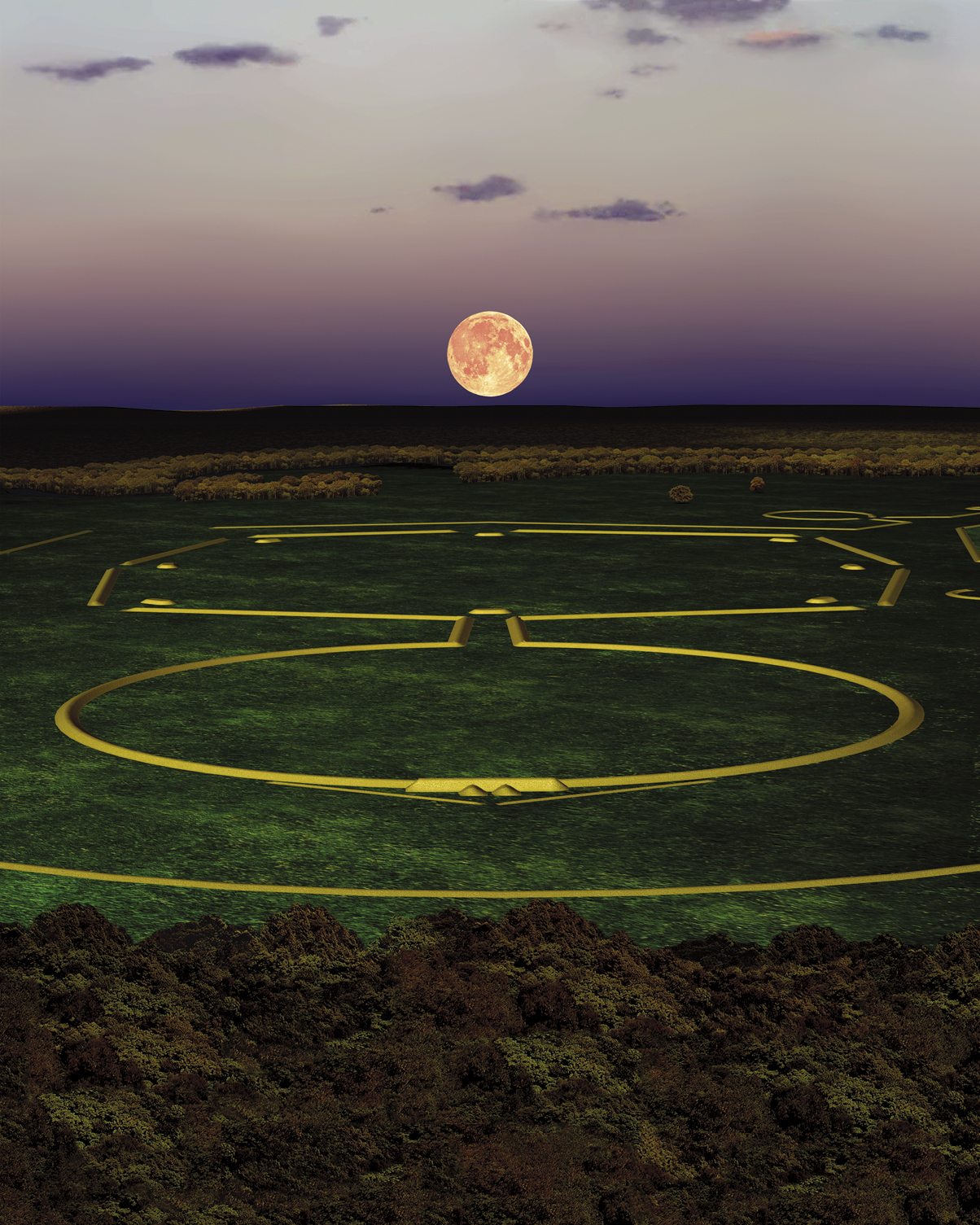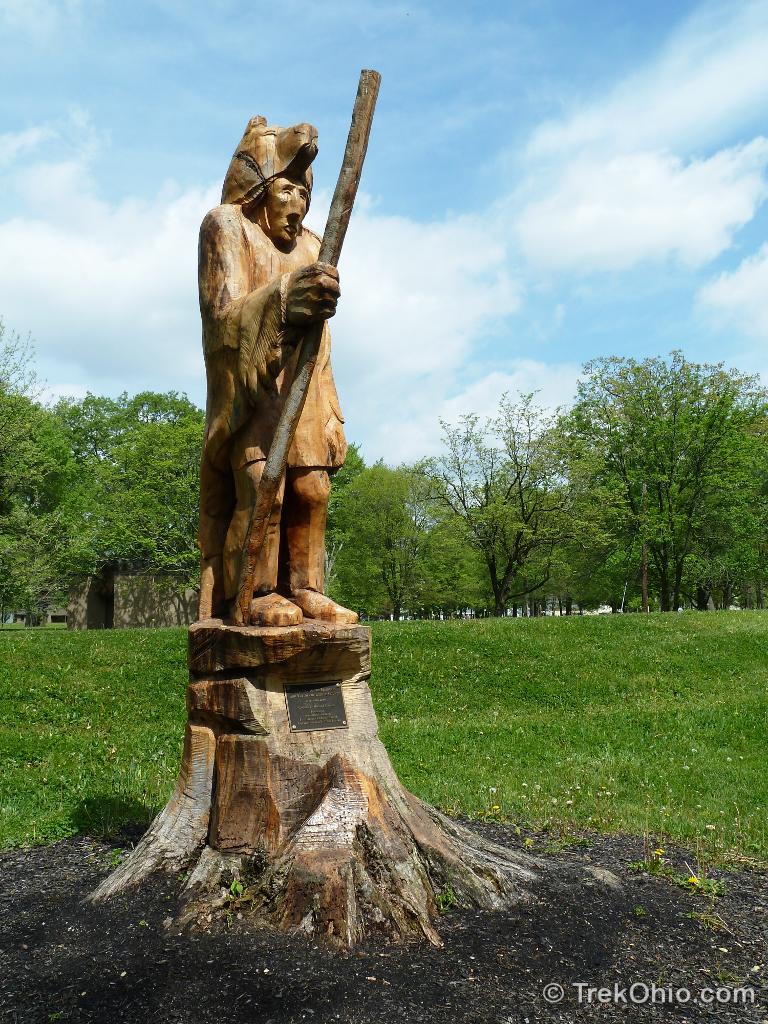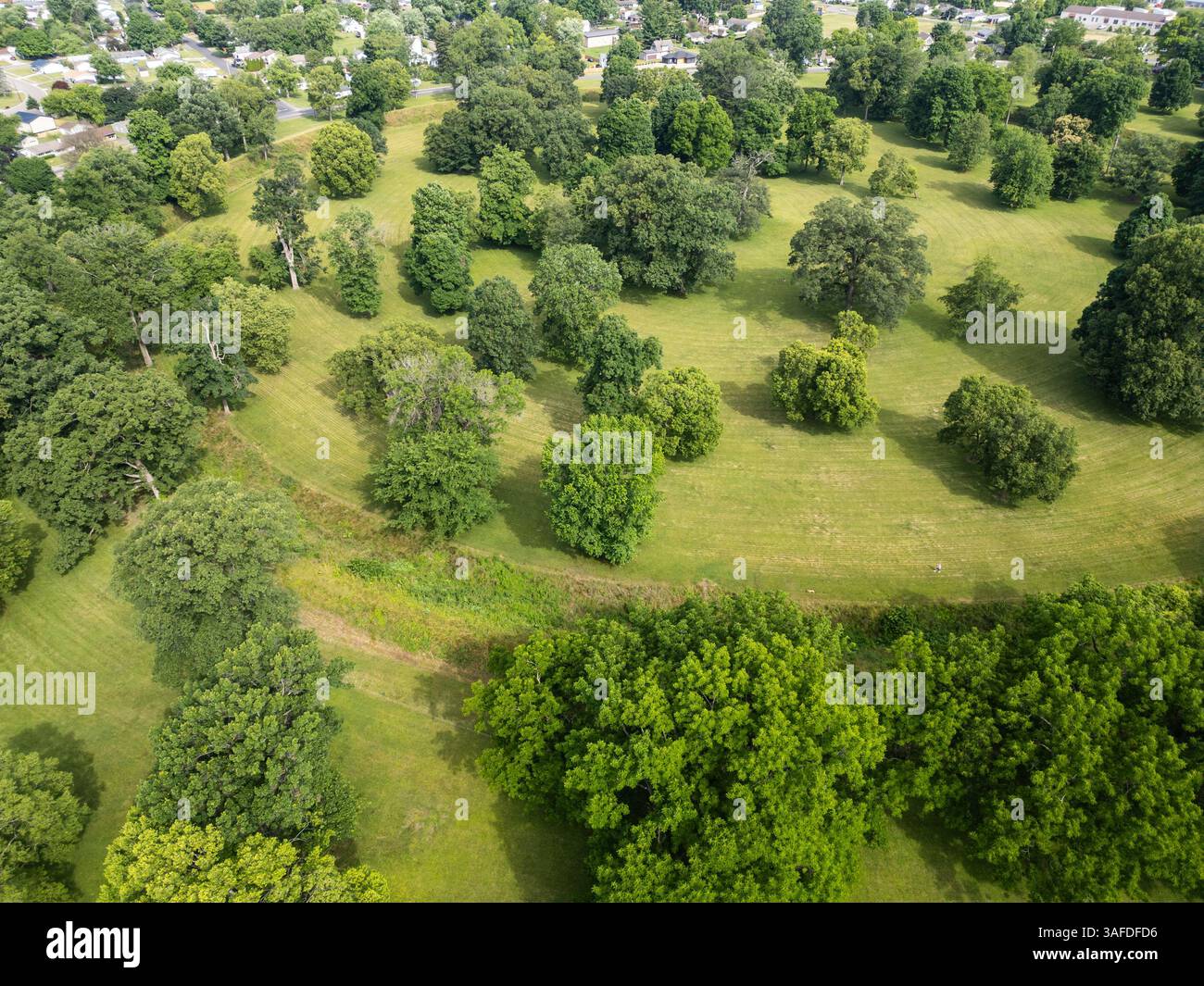
Unearthing Cosmic Cartography: A Traveler’s Guide to the Newark Earthworks
To step onto the ancient grounds of the Newark Earthworks in Ohio is to walk upon a masterpiece of pre-Columbian engineering, a profound astronomical observatory, and, in a deeply meaningful sense, a series of colossal "maps" etched into the very landscape by the hands of the Hopewell Culture nearly 2,000 years ago. Forget the paper maps you consult for directions; these are maps of the cosmos, of sacred space, and of a worldview so sophisticated it continues to awe and challenge our modern understanding. For the discerning traveler seeking not just a destination but an experience that rewrites history and connects them to the stars, the Newark Earthworks offer an unparalleled journey.
The Newark Earthworks complex, designated a UNESCO World Heritage site, is the largest set of geometric earthen enclosures in the world. Constructed between 100 BC and 500 AD, these monumental structures represent the zenith of Hopewell achievement, a testament to their advanced knowledge of geometry, astronomy, and social organization. Far from being random mounds, these are precise, deliberate formations designed with an accuracy that rivals modern surveying techniques, all without the benefit of metal tools, draft animals, or the wheel. They are, quite simply, one of humanity’s most extraordinary prehistoric accomplishments, and they beckon the curious traveler to explore their silent narratives.
Our journey into this ancient cartography begins most dramatically at the Octagon Earthworks. Imagine an eight-sided enclosure so vast it covers 50 acres, connected by a parallel-walled causeway to a massive circular enclosure. What strikes you first is the sheer scale – the walls, once 10 to 12 feet high, still stand several feet tall, giving a palpable sense of the effort and vision involved. But the true genius of the Octagon lies in its astronomical precision. It is, unequivocally, a lunar observatory of monumental proportions. The Octagon’s eight sides and its connecting gateways are aligned to the extreme northern and southern moonrises and moonsets over an 18.6-year cycle. This isn’t just an approximate alignment; it’s exact, demonstrating a profound understanding of lunar movements that would not be surpassed in Europe until centuries later.

Walking the perimeter of the Octagon, you can almost feel the ancient astronomers and priests moving through the space, tracking the moon’s subtle dance. It’s a humbling experience to stand where people, two millennia ago, dedicated such immense resources and intellectual prowess to understanding their place in the universe. The Octagon Earthworks essentially functions as a gigantic, fixed map of the lunar calendar, allowing the Hopewell people to predict important celestial events, which likely held deep spiritual and ceremonial significance. It’s a map not of geographical features, but of time itself, charting the rhythms of the cosmos.
A short drive away lies the Great Circle Earthworks, also known as the Moundbuilders State Memorial. Here, a massive circular enclosure, over 1,200 feet in diameter and encompassing 30 acres, surrounds a large, central earthen mound known as Eagle Mound. The walls of the Great Circle are equally impressive, still standing 8 to 14 feet high in places, punctuated by a single, narrow entranceway. Unlike the Octagon’s celestial focus, the Great Circle feels more terrestrial, perhaps serving as a ceremonial space for gatherings, rituals, or social events. The central mound, once described as resembling an eagle, likely held significant spiritual importance, possibly serving as a burial site for important individuals or a focal point for ceremonies connecting the community to the ancestral realm.
The visitor center at the Great Circle offers excellent interpretive exhibits, providing context and archaeological insights into the Hopewell culture. It helps frame the "map" concept – not just how these sites were physically laid out, but how they mapped their society, their beliefs, and their relationship with the natural and supernatural worlds. The scale here is still breathtaking, and the feeling of stepping into such an ancient, revered space is palpable. You gain a sense of the immense communal effort required to construct these earthworks, suggesting a highly organized society with shared spiritual and cultural goals.
The concept of "Native American maps" at Newark extends far beyond simple geographical representations. These earthworks are maps in several profound dimensions:

- Celestial Maps: As seen with the Octagon, the Earthworks precisely chart the movements of celestial bodies. This wasn’t just idle curiosity; it was fundamental to their worldview, guiding their agricultural cycles, spiritual practices, and understanding of time and destiny. The sky was a living map, and the Earthworks were the instruments to read it.
- Sacred Landscape Maps: The Hopewell people didn’t just build in random locations. They chose sites with significant topographical features, often near rivers (the Licking River is nearby), and integrated the natural landscape into their designs. The Earthworks map a sacred geography, creating pathways and enclosures that delineate sacred space from profane, connecting specific points on the earth to specific points in the sky. These sites were nodes in a larger sacred network that likely extended across the Ohio Valley.
- Social and Ceremonial Maps: The layout of the enclosures likely mapped the social structure and ceremonial life of the Hopewell people. The pathways, gateways, and enclosed spaces would have dictated how people moved through the site, where different rituals took place, and who participated in what. They were living maps of social order and spiritual procession.
- Worldview Maps: Ultimately, the Newark Earthworks map the Hopewell worldview itself – their sophisticated understanding of the cosmos, their deep spiritual connection to the land, their communal values, and their engineering prowess. They are a tangible expression of a complex culture, offering a window into their intellectual and spiritual lives.

For the modern traveler, visiting Newark Earthworks is more than just a historical excursion; it’s an immersive dive into the mind of an ancient civilization. It’s a chance to challenge preconceived notions about "primitive" cultures and to marvel at the ingenuity and depth of knowledge possessed by indigenous peoples. You don’t just see the remnants of a past civilization; you feel the enduring presence of their intellect and spirit.
Planning Your Journey:
- Best Time to Visit: Spring and Fall offer the most pleasant weather for walking the extensive grounds. The green landscapes against the earthen structures are particularly beautiful.
- What to Bring: Comfortable walking shoes are a must. Sunscreen, a hat, and water are advisable, especially during warmer months, as much of the experience is outdoors. Binoculars can enhance the experience, allowing you to appreciate the distant features.
- Guided Tours: Check with the Ohio History Connection (who manage the sites) for any available guided tours or special events. An expert guide can truly unlock the deeper meanings of the earthworks.
- Respect the Site: Remember that these are sacred sites for many Native American communities. Walk respectfully, stay on marked paths, and leave no trace.

While the Octagon Earthworks is uniquely integrated with a modern golf course (a controversial but necessary arrangement that has preserved the site over the years, though public access is restricted during certain golfing hours), the Ohio History Connection has recently secured full access to the Octagon, ensuring its preservation and public interpretation as a sacred site. This ongoing effort highlights the critical importance of balancing preservation with public access and interpretation.
In conclusion, the Newark Earthworks are not merely historical relics; they are living testaments to an extraordinary civilization. They are maps not drawn on parchment, but sculpted from the earth itself – maps of the moon’s journey, of sacred space, of a vibrant society, and of a profound cosmic understanding. For the traveler who yearns to connect with history on a deeper, more intellectual and spiritual level, who seeks to understand how ancient peoples mapped their world and their universe, a visit to the Newark Earthworks is an essential pilgrimage. It’s an invitation to stand where the earth meets the sky, where science meets spirit, and where the echoes of an ancient cartography resonate with timeless wisdom. Come, and let these colossal earthen maps guide you to a forgotten, yet ever-present, understanding of humanity’s boundless potential.
